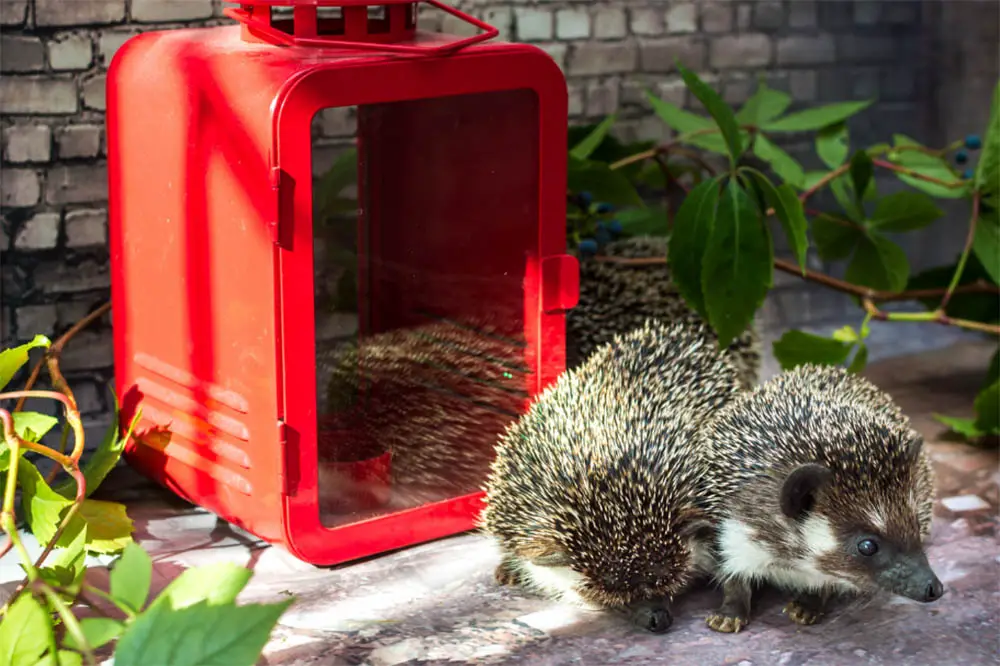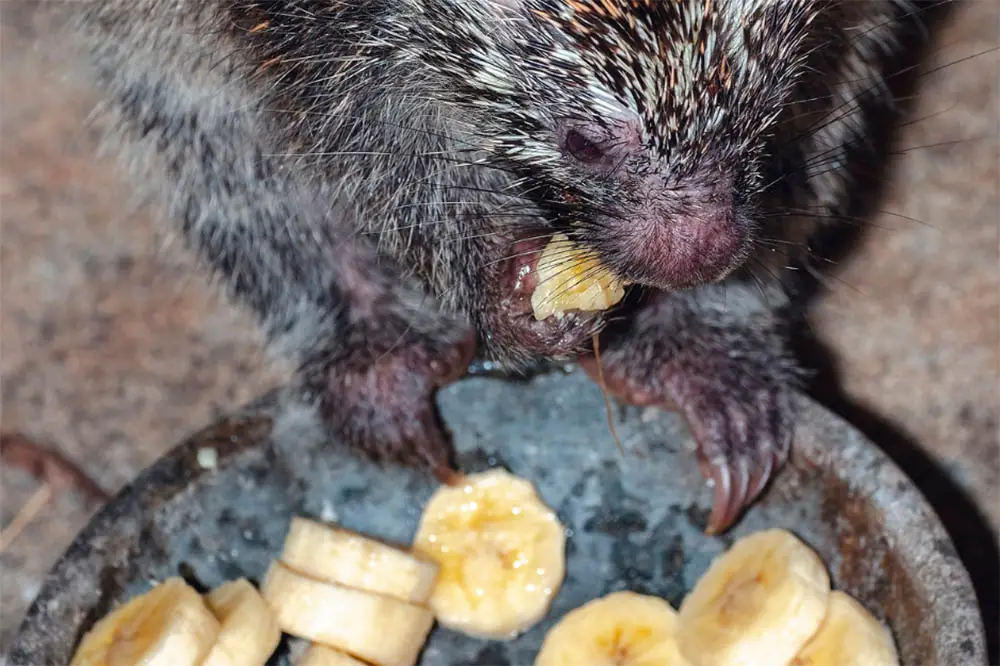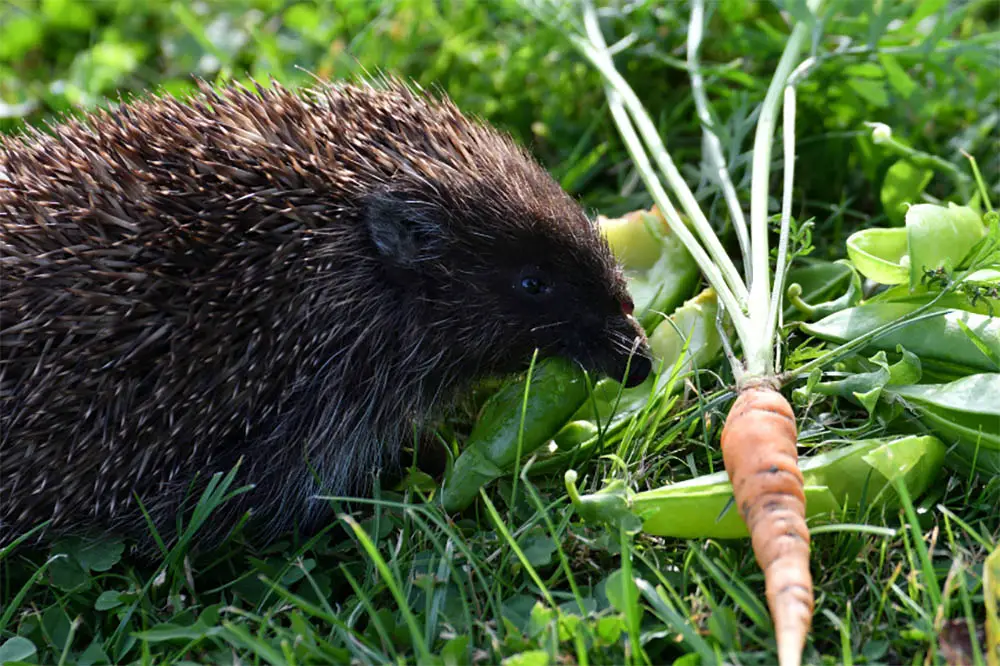
Quick Answer: A hedgehog can run at speeds of 4 to 6 miles per hour, which is similar to a human’s jogging pace. Want to know more about what makes your hedgehog run? Read more below.
Key Takeaways:
- Hedgehogs can sprint up to 4-6 miles per hour, a speed that’s useful for quick escapes from predators, but they’re not built for long-distance running, relying instead on their muscular hind legs for short bursts of speed.
- Their nocturnal lifestyle and the need to conserve energy for foraging and predator evasion influence hedgehogs’ speed, with their movements varying from ambles to rapid sprints depending on the context.
- Protecting hedgehogs involves creating safe environments, such as wildlife-friendly gardens and hedgehog highways, and mitigating threats like habitat loss and road traffic to ensure these creatures can thrive in their natural habitats.
Hedgehog Speed: How Fast Can They Go?
When you think of a hedgehog, the image of a speedy creature might not immediately come to mind. Yet, these small mammals can exhibit quite the brisk pace, often engaging in what could aptly be described as a “hedgehog run.” Typically, a hedgehog can reach speeds of up to 4 to 6 miles per hour (6 to 9 kilometers per hour), which is about the pace of a human jogging. This burst of speed is essential, especially when they need to escape predators.
Hedgehogs are nocturnal, meaning they are active at night. During these hours, they might appear more lively and quick as they forage for food and explore their habitat. The cover of darkness provides them with the freedom to move more freely without the threat of predators, making their ability to quickly “hedgehog run” a significant advantage.
Understanding the speed at which hedgehogs can move is crucial for their conservation. By recognizing their capabilities, we can better design wildlife corridors and safe spaces that cater to their natural behaviors. This knowledge is vital for protecting these creatures from the dangers of an ever-changing environment, including busy roads and urban development.
Measuring Hedgehog Speed in Different Environments
The speed of a hedgehog can vary greatly depending on where they are. In the wild, they may move more cautiously, navigating through grasslands and woodlands. In contrast, hedgehogs in captivity might not exhibit the same urgency or speed, as the threats they face are minimal.
Scientific studies have been conducted to measure hedgehog speed, often involving motion-sensor cameras and tracking devices. These studies reveal that hedgehogs can move quite differently when they’re foraging compared to when they’re escaping a threat. For example, a hedgehog’s pace will increase significantly when it senses danger.
The terrain also plays a role in their speed. Hedgehogs can maneuver through various landscapes, from open fields to dense underbrush. However, they may slow down in urban areas, where obstacles like fences and roads hinder their movement. Additionally, temperature and humidity can affect how fast a hedgehog moves. They tend to be less active and slower in colder or very humid conditions.
Comparing Hedgehog Speed to Other Small Mammals
When we look at the animal kingdom, hedgehogs might not win any races against the likes of rodents or rabbits. These creatures have evolved to be much faster due to their different survival strategies. For instance, rabbits can bolt away from danger at impressive speeds, a necessary adaptation for an animal that’s often hunted.
However, hedgehogs have their own unique way of staying safe. Their primary defense mechanism is not speed but their ability to roll into a protective ball, shielding them with spines. This tactic often deters predators more effectively than trying to outrun them.
Here’s how hedgehogs stack up against other small mammals in terms of speed:
- Rabbits: Up to 35 mph (56 km/h)
- Rodents (such as mice): Up to 8 mph (13 km/h)
- Shrews: Up to 6 mph (9.7 km/h)
- Hedgehogs: Up to 4-6 mph (6-9 km/h)
This comparison shows that while hedgehogs may not be the fastest, they are certainly not the slowest. Their speed is adequate for their lifestyle and, coupled with their spiny armor, provides them with a balanced approach to survival.
In the end, the hedgehog’s modest speed is part of a bigger picture. It’s a trait that, along with their nocturnal habits and defensive posture, has allowed them to thrive in diverse environments. Whether they’re dodging a predator or simply exploring their surroundings, hedgehogs demonstrate that speed is just one aspect of their fascinating lives.
Hedgehog Anatomy and Its Impact on Speed
The hedgehog anatomy is a fascinating blueprint of nature’s design, tailored for survival rather than speed. Yet, these small mammals can hustle when they need to, thanks to their muscular structure and strong hind legs. These legs are powerhouses, providing the thrust needed for quick sprints. Hedgehogs aren’t built for long-distance running, but their muscles are perfect for short bursts that help them dart away from danger.
Their compact body shape and short limbs are not just adorable features but also contribute to their unique running mechanics. While these traits may not support sustained high speeds, they offer stability and agility, allowing hedgehogs to maneuver through their habitats effectively. The spines that cover their backs, while primarily for protection, have a minimal impact on their aerodynamics when running. These spines can lay flat against the body, reducing air resistance.
The evolutionary development of these features is a testament to the hedgehog’s need for defense over velocity. Their anatomy has been shaped by the need to forage for food and evade predators rather than chase down prey.
Muscular Structure and Limb Functionality
Diving deeper into the hedgehog’s muscular system, it’s clear that certain muscles are more developed than others. The gluteal muscles in their hindquarters, for instance, are particularly robust. These muscles contract to propel the hedgehog forward, working in tandem with their limb functionality. The muscle-to-limb ratio is optimized for strength rather than endurance, fitting for their lifestyle.
During activities like foraging, hedgehogs use a more relaxed set of movements, conserving energy. However, when a predator looms, these muscles spring into action, allowing the hedgehog to sprint to safety. It’s a remarkable system that balances energy conservation with the potential for rapid escape.
Spine Flexibility and Aerodynamics
The hedgehog’s spines are a defining feature, and their flexibility is crucial for both defense and movement. When a hedgehog curls into a ball, the spines interlock to form an impenetrable barrier. This defensive posture is essential for protection, but it also means that hedgehogs are not built for speed. The spines themselves are not significant contributors to drag when the hedgehog runs, as they can lay flat to streamline the body.
Research into hedgehog aerodynamics is limited, but it suggests that when hedgehogs run, their spines do not significantly hinder their speed. Instead, their shape and the ability to tuck their limbs and head while rolling into a ball demonstrate an evolutionary trade-off, prioritizing safety over speed.
In their natural habitat, hedgehogs have adapted to rely on their spines for defense and their legs for the quick sprints needed to avoid threats. Their anatomy may not be designed for high-speed chases, but it perfectly suits their survival needs.
Behavioral Factors Influencing Hedgehog Speed
The speed at which a hedgehog can run is not solely determined by its physical capabilities. Behavioral factors play a significant role in how these creatures navigate their world. For instance, the instinct to flee from predators can send a hedgehog sprinting at full tilt. During the breeding season, the drive to find and compete for mates can also spur them into quicker movement.
Hedgehogs are primarily nocturnal, meaning they are most active at night. This lifestyle influences their activity levels and, consequently, their speed. The darkness provides cover, allowing them to move more freely and potentially at a faster pace when necessary.
Their foraging habits also dictate changes in speed. Hedgehogs may amble along while searching for food but will burst into a sprint when catching prey or if they feel threatened. This variation in speed is a balancing act, as it impacts their energy expenditure. Too much running can deplete their energy reserves, so they must be efficient in their movements.
The Role of Survival Instincts in Hedgehog Sprinting
Survival instincts are key to understanding why hedgehogs sometimes need to make a quick dash. These instincts are crucial for evading predators and can vary among different hedgehog species. For example, hedgehogs in areas with more ground predators might be more prone to sprinting than those in safer environments.
Situations where a hedgehog’s speed is vital for survival include:
- Crossing roads: Avoiding vehicles requires quick, decisive action.
- Evading natural predators: Outrunning or dodging animals that see them as prey.
From a young age, hedgehog offspring learn about danger and how to escape it. Mothers play a pivotal role in teaching these escape tactics, ensuring their young know when and how to run for safety.
Hedgehog Foraging Behavior and Movement Patterns
A hedgehog’s quest for food greatly influences its movement patterns and speed. While foraging, hedgehogs rely heavily on their sense of smell and hearing to locate food sources. Their movements can be quite methodical:
- Zigzagging across areas to cover more ground.
- Sudden bursts of speed when pursuing prey like insects or small vertebrates.
The need for energy conservation is a constant consideration. Hedgehogs must forage efficiently, balancing the energy they expend with the calories they consume. This means that while they are capable of quick movements, they are usually reserved for when it’s most necessary.
The Lifecycle of a Hedgehog and Its Effect on Mobility
The hedgehog lifecycle has a profound impact on these creatures’ mobility. From the moment they are born, hedgehogs undergo a series of changes that affect how fast they can run. As hedgehogs grow and mature, their speed increases. They are at their quickest as adults when they need to forage widely and evade predators efficiently.
However, as hedgehogs reach senior status, their pace often slows. This is due to the natural process of aging, which can lead to decreased mobility. The stages of a hedgehog’s life—juvenile, adult, and senior—each come with their own mobility challenges and abilities.
From Birth to Adulthood: Growth and Speed Development
The journey from birth to adulthood is critical for a hedgehog’s speed development. In the early stages of life, hedgehogs are relatively immobile, but as they grow, several factors contribute to their increasing speed:
- Muscle growth and coordination improve, allowing for quicker movements.
- Diet and environment play roles in how rapidly they develop.
- Engaging in play helps juvenile hedgehogs develop their motor skills and agility.
As hedgehogs transition from juveniles to adults, their speed reaches its peak. This is when they are most active in terms of foraging and escaping threats.
The Impact of Aging on Hedgehog Speed and Activity
As hedgehogs age, they often experience a decline in speed and activity levels. This slowdown can be attributed to the natural wear and tear on their bodies. Joint and muscle issues may arise, making it harder for them to move as swiftly as they once did.
Age-related changes in hedgehogs can affect their ability to:
- Forage effectively for food.
- Escape from predators quickly.
Caring for older hedgehogs involves understanding these limitations and helping them maintain their mobility. Providing a safe and accessible environment can greatly enhance their quality of life as they age.
Protecting Hedgehogs and Their Habitats
Ensuring the well-being of hedgehogs involves more than just admiring their cute demeanor; it requires active efforts in habitat conservation. Hedgehogs face numerous threats in the wild, including habitat loss, dangers from road traffic, and the risk of predation. To safeguard these creatures, it’s essential to create environments where they can thrive and move freely.
Individuals and communities can take practical steps to protect hedgehogs:
- Construct hedgehog highways in fences to allow free movement between gardens.
- Provide shelters where hedgehogs can rest and stay safe from predators.
Wildlife conservation organizations play a pivotal role in these efforts, advocating for policies and practices that support hedgehog populations.
Identifying and Mitigating Threats to Hedgehog Safety
Hedgehogs encounter a variety of dangers that can be addressed through conservation efforts and changes in our behavior. The use of pesticides can poison their food sources, while habitat fragmentation limits their roaming space. Additionally, climate change poses a long-term threat to their survival.
To reduce these threats:
- Adopt wildlife-friendly gardening practices that avoid harmful chemicals.
- Support conservation initiatives that aim to protect natural habitats and hedgehog populations.
By understanding and acting on these issues, we can help ensure hedgehogs remain a thriving part of our ecosystem.
Creating a Hedgehog-Friendly Environment in Your Backyard
Making your backyard a haven for hedgehogs is a rewarding endeavor. Here are some tips to get started:
- Plant hedge-friendly vegetation that provides natural cover and food.
- Refrain from using chemicals that could harm hedgehogs or their prey.
- Set up safe nesting sites to offer shelter and breeding spaces.
Ensure hedgehogs have access to:
- Food such as fruits and insects, and a water source for hydration.
- Garden corridors for safe passage, connecting different habitats.
Community involvement is crucial in forming a network of safe spaces for hedgehogs, allowing them to move freely and securely in their quest for food and shelter.
Frequently Asked Questions
Question 1:
What factors can impact a hedgehog’s maximum running speed? Answer: Terrain and weather conditions, such as temperature and humidity, can significantly affect a hedgehog’s running speed.
Question 2:
Can hedgehogs maintain their top speed for long distances? Answer: No, hedgehogs are built for short bursts of speed, not sustained long-distance running.
Question 3:
Do baby hedgehogs run slower than adults? Answer: Yes, baby hedgehogs are less mobile and run slower, but their speed increases as they grow and develop.
Question 4:
How does a hedgehog’s diet affect its ability to run fast? Answer: A balanced diet contributes to muscle growth and overall health, which can impact a hedgehog’s running capabilities.
Question 5:
Are there any human activities that can indirectly affect hedgehog speed? Answer: Yes, habitat destruction and the use of pesticides can reduce food availability, impacting hedgehog health and their ability to run quickly.
Read more facts about Hedgehogs here.
Further, read about Hedgehog Habits here.








